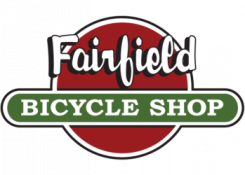Winter sale Coming Soon!
Your cart is currently empty

An E-bike is much more than an “analog” bicycle: it's one of the most sustainable means of transport and will play an instrumental role in transportation in the future. The power of its electric motor helps riders get around better in the city, across the country or up a mountain. The focus is on fun--even on longer routes—and a unique riding experience. Small wonder, then, that E-bikes are booming in British Columbia.

Everyone talks about E-bikes, but there are actually three types of electric bikes. The generic term "E-bike" has become established, but conceals the differences between the variants. They lie in the motor power, the type of assistance and legal considerations.
1. The first class of E-bikes can also be called “Pedelecs” (Pedal Electric Cycle), meaning the motor is only activated when the rider is pedaling. In Canada, these bikes are regulated at 32km/h. If you want to go even faster, you have to achieve this with muscle power and/or gravity. In most countries, class 1 E-bikes or pedelecs are legally considered bicycles.
2. Class 2 E-bikes are much like pedelecs, but come equipped with a throttle, enabling the cyclist to engage the motor to a maximum of 32 km/h without the need to pedal. Currently in British Columbia, these bikes can be legally ridden on most bike paths, but the legislation is very fluid.
3. With Class 3 E-bikes “S-pedelecs,” the S stands for "speed” up to 45 km/h. They are subject to more vigorous laws as well as strict limitations on trails.
E-bike motors are either located between the cranks or in one of the hubs. For a mid-drive Ebike, the motor is positioned directly in between the pedals. This ensures a low and central center of gravity, providing the feeling of riding a traditional bike. A difference riders can’t see, but will experience on a long ride – especially on hills – is that mid-drive motors work synergistically with the bike’s gears for higher efficiency. This translates into longer riding range per charge as well as a ride that feels much more natural.
For a hub-drive E-bike, the motor is positioned in the centre of the front or rear wheel. Some less experienced riders find a hub motor E-bike does not maneuver naturally, either because the additional weight in the back wheel makes it harder to balance, or because the additional weight in the front creates steering challenges.
E-bike consoles display various information such as range, speed and distance and enable the rider to change the support levels of the motor. Most customers at Fairfield Bicycles are happy with a small control unit, but tech-heads may desire more complex fully networked displays, including smart features, and ride analyses.
Finally, E-bikes depend on lithium-ion batteries, the capacity of which is usually measured in Watt-hours (Wh). In general, the larger the Watt-hours, the greater the range the bike will have.


Most bikes (and trikes) can be retrofitted with eSystems. Fairfield Bikes has a substantial history of adding E-systems and is currently using Bafang motors with their conversion kits. These kits are highly customizable, enabling riders to choose motor strength, battery capacity, throttle capability, display console and rider characteristics. They can be a terrific way to breath new life into one's favourite, trusty speed.
